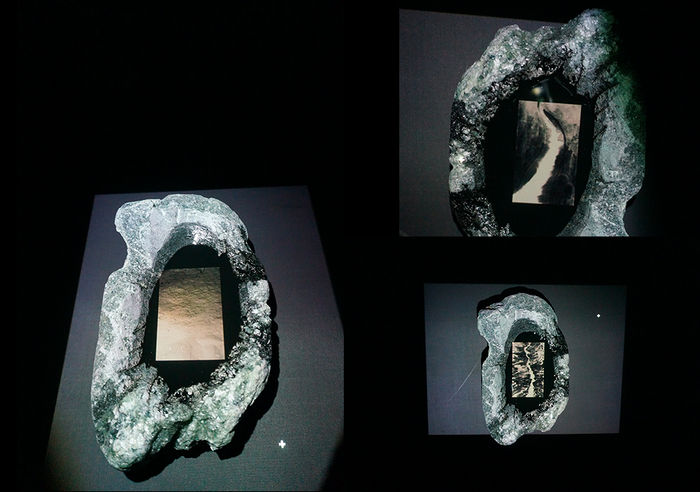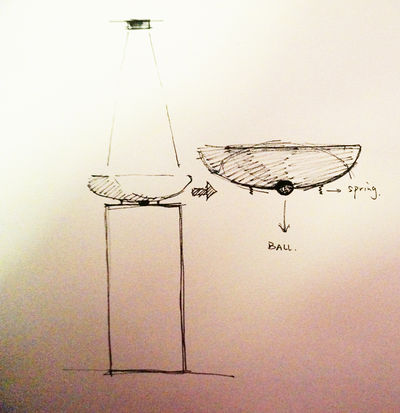User:Chen Junyu/Graduation Project Seminar/ project proposal/Proposal5
Context
People have found examples of attempts to capture the phenomenon of motion into a still drawing in paleolithic cave painting. The animals in the paintings are usually have multiple legs in superimposed positions to convey the perception of dynamic. The paleolithic cave painting reflect the ancients’ understanding of motion and the desire of recording movement, in addition, it may also hint the consciousness of drawing things lively.
The generally accepted principle for Chinese painting was written by Hsieh Ho,a writer, art historian and critic in 6th century China, named as The Six Principles of Hsieh Ho. He summarized six sentences to divide the different level of paintings. There are different versions of the interpretation in English of the six principles, and all of them are so contrasting, here I use the translation of Osvald Siren's Early Chinese Painting, which I think it is the closest one to the original version.
The six principles of Chinese painting:
1) Resonance of the spirit; Movement of Life.
2) Bone Manner (i.e. Structural) Use of the Brush.
3) Conform with the objects ( to obtain ) their Likeness.
4) According to the Species, apply the Colours.
5) Plan and Design; Place and Position ( Composition)
6) To transmit Models by Drawing.
Hsieh Ho points out the “Spirit Resonance” or vitality is the overall energy of a work of art. It means that the lively representation either or both on depicting concrete objects or conveying the spirit of painter and generally a successful drawing should be able to transfer the dynamic atmosphere to the spectators.
If we look at the action drawing, it presents a different meaning of “illusion of moving”. The physical act of painting becomes even more important than the final result of the work. The dynamic here refers to the emphasis of the act of drawing, the process of drawing or “The kinetic basis of drawing”( Philip Rawson, Drawing)
"This quality of underlying movement is, of course, the special 'charm' of drawing which can never properly be carried over from drawing into a finished work of painting or sculpture."(Philip Rawson, Drawing). It is barely possible for spectators experiencing the "charm" of the dynamic and irreversible process from the final work.
The "dynamic" of drawing seems obscure and unreadable. "In appreciating drawings, no less than in making them, one has to be continuously aware of the character and qualities of the sequences which went into their composition. To get it at least one has to look into the drawing carefully to find the order in which its parts were executed...But for thoroughgoing preservation of the qualities of drawing in painting one has to look to the Far East --or to Western 'action' painting based on Far Eastern ideas."
Research Question
My research question is, How to most effectively present ( and preserve) the movement or gesture that is the basis of drawing or chinese ink painting, (here movement can be related to Hsieh Ho's first principle of Chinese painting: the resonance of vitality.)
Prototypes
First step
My first step for the project is trying to alter or transform the form of a painting by putting it into an external condition. I have two prototypes here:
1st.
The expected installation would be formed by three parts : a stone container (1 metre long, 40 centimetres wide ) which has a construction that response to the vibration of the environment, it will shake when the vibration reach a certain range. The ink in the stone container, and the projection of a drawing from the top of the container onto the surface of ink. I will use the technique and material of Chinese painting to approach the final drawing. The projection of the drawing should be in the same scale of the original one, and should be available to represent all the details of stroke and the texture of the paper. For this project, the image spectators seeing is based on my drawing. While the waving of the ink, the projection of the drawing on the surface would keep changing its image . It is also irreversible. Every moment the current environment generate a new effect on the drawing, thus spectator will receive sequence of image which are reconstructed from my drawing by the dynamic environment. It can be read as the live animation, but in another way, the environment keep overlapping the unexpected strokes(wave) over the latest image. And spectators are also included in the process of drawing. It is the live drawing process which can always captured by viewers who at the same time also play the author of the drawing.
2ed It is an attempt to trigger the movement of the painting by air. Also I projected the painting on the wall and generate the spray to effect the projection by changing the condition of light from projector. Here is a video of how it works.
Second Step
After the first step, I start thinking if the changing of the form will lead a misunderstanding or distraction to spectators from the concept of dynamic. For me these two prototypes present the performative meaning more than the internal concept. So I go into the concept itself -- what it does vitality mean and the possibility to present the process of painting meanwhile keep the form of painting.
I do not have an answer yet, but I have some more try out based on the idea of second step:
Preview works
"How to Draw a Perfect Circle"
Even though it is a work done for the group exhibition, I think it is the related to this project on thinking the relation between drawing and animation, also the usage of ink.
Work Survey
"Background Story" -- A "painting" by Xu Bing.
Xu Bing and his team use different material from our daily life trying to transfer Wang Siming's landscape painting painted in 1764.
Literature Survey
Philip Rawson, Drawing
Fritz van Briessen, The Way of the Brush: Painting Techniques of China and Japan
James Elkins, Chinese Landscape Painting as Western Art History
Xie He Six principles of Chinese painting 古画品录
Lu Hong, The Formation and Development of New Ink Art in China http://www.mplusmatters.hk/inkart/paper_topic2.php?l=en
Zhu Qi, "Natural and abstract form and the unfinished modernism of Chinese painting" http://www.artlinkart.com/cn/article/overview/b55cvCso
Zong baihua,"Thoughts of <A New Account of the Tales of the World> and the beauty of Jin Dynasty"


